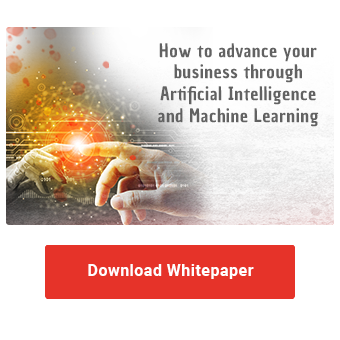Data literacy is making its way from academia into the business world and is one of the visible trends in recent headlines. The collective term data literacy unites skills that enable the processing of data and, in particular, the extraction of information from data sets. Broadly speaking, it is about understanding data, working with it, analyzing it, and communicating information gained. Even if automations in the company strongly regulate the data traffic, the business users are involved at least in the use and mostly also in the generation of the data and must be prepared as best as possible for future tasks and challenges. They should be enabled to make data-based, reliable decisions. This is exactly where the topic of data literacy comes in, helping companies to shape the social component of their data strategy.
In this article, we will show you how to approach the topic of data literacy and show you ways to use the trend for your own benefit.
Meaning of Data Literacy
 Based on the term literacy, data literacy describes the ability to express and understand data. Similar to the spread of the personal computer in everyday working life, this collective term introduces new competencies that will determine our everyday working life in the future. These can be clustered into five sub-areas:
Based on the term literacy, data literacy describes the ability to express and understand data. Similar to the spread of the personal computer in everyday working life, this collective term introduces new competencies that will determine our everyday working life in the future. These can be clustered into five sub-areas:
Generation of data
Suitable data is not already available for every analysis purpose. Business users should therefore also be familiar with data collection. Special care in the collection and selection of data points are necessary building blocks for later analyses. By having an overall understanding of an analysis project, errors in manual collection can be avoided and data can be stored in a suitable location. Selecting and applying open standards for the formal and content formatting of data dramatically increases the reusability of data sets. Users are supported by company-wide governance and an infrastructure that is as intuitive to use as possible.

Unrestricted manual data entry may require intensive data cleansing later on.
Especially the matching of data sets is a challenge.
Data management
In addition to the pure storage and retrieval of data in suitable data structures, data management on the user side also concerns topics such as the backup of version statuses and the design and application of access concepts. Data retrieval in the sense of finding relevant internal and external data sources is also part of this. Here, a number of different tools and utilities exist, which only develop their full potential through a fundamental understanding of contexts and motivations.
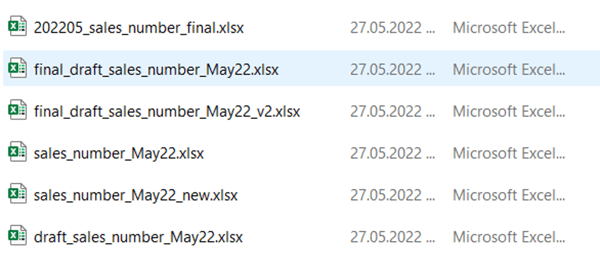
Naming conventions and included versioning enable a single point of truth, which is understandable for all.
Understanding the data
The understanding of the data consists of the professional and technical knowledge about the data. The technical component is usually given by the execution of one's own job and corresponding training. With regard to the resulting data, it is possible to say not only what is captured, but also what the data usually looks like and what range of values it assumes. The technical know-how helps to shape analysis questions. The general technical understanding of the data is based on the fact that data errors, data capping, and an underlying bias can be identified and addressed in the analysis process.
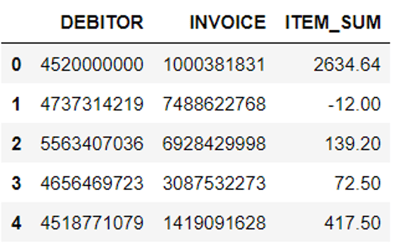
Technical knowledge helps to understand the meaning of negative invoices, for example.
Analysis of data
When analyzing data, the basic ability to break down questions into transformation steps of the available data must be learned. In addition, software tools can be used to support the analysis. Not everyone needs to be able to write their own program code, but a confident handling of chosen no-code or low-code tools is important. Depending on the complexity of the analysis, statistical knowledge can help. If the view into the future is interesting, machine learning can be used to look into the future on the basis of old data. An introduction to the topic from a company's point of view can be found in our whitepaper.
Communicating data
In order to obtain added value from data, decisions must be derived from the results and communicated. The ability to communicate data in the form of visualizations and key figures in a way that is appropriate for the target group is particularly important due to the high information density in everyday working life. The context should also be prepared in order to share results with outsiders.
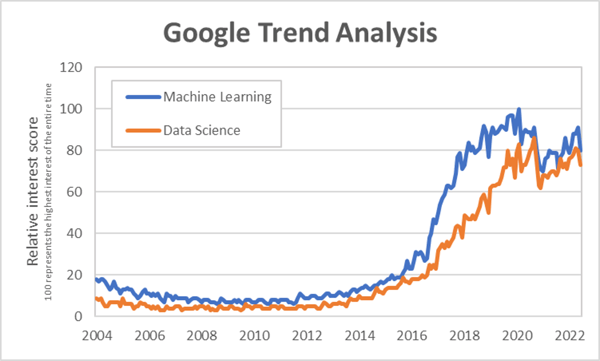
With visualizations information are accessed more easily
Drivers of the topic
The competencies united in the term data literacy are strongly reminiscent of the skills of employees in the business intelligence, data analytics or data science department. They should already be at an advanced level of expertise. However, data literacy is one of the new basic skills that every business user should have. There are several reasons for this:
Self-service systems are gaining in importance
Not every analysis is so complex that it is worth setting up a data science team. Since the necessary domain knowledge regarding the problem, objectives and data understanding is already available in the business department, the application ideas should be developed directly there and, if possible, also implemented. Supporting platforms such as SAP Data Intelligence simplify the path for users, but require basic data competence.
How to advance your business through
Artificial Intelligence and Machine Learning
Digitization of everyday work
The trend is toward a paperless office and supporting applications on mobile devices. In such a digital workday, a basic understanding of data is important on the user side. No system can be built so robustly or intuitively that the user is completely taken by the hand. How often have you seen mandatory fields in information systems, for example, filled in with nonsensical values and the system used inadequately? The motivation for the perceived extra effort in certain work steps must be anchored in the mentality, and data literacy can help.
Increase in data
The amount of data is increasing by approximately 27% annually. Where once the primary touch point of data for business users was an Excel spreadsheet, today there are new automated data sources and different formats. Business processes and sensors provide a huge flood of data, the information extraction of which is a challenging but rewarding task.
Advanced analytics
The trend is not just to understand what happened, but also why it happened, or even what is likely to happen in the future. Machine learning, for example, is being used to find answers to these questions. While users do not necessarily have to perform advanced analyses - for this they ideally have the support of a data science department or selected experts - there should be a certain degree of familiarity with strongly data-based analyses for communicating the results and evaluating the derived decisions.
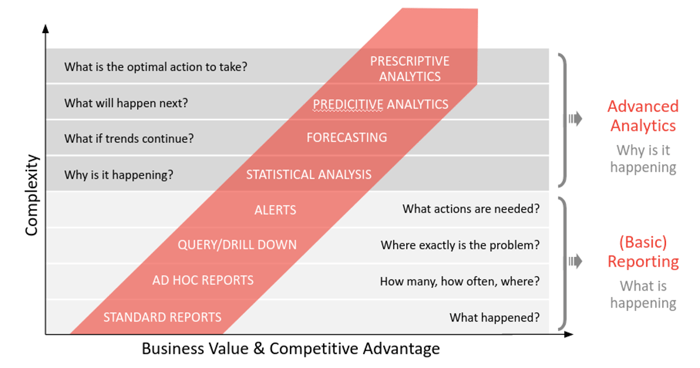
Data platform trend
With the increasing amount of data sources in the company, harmonized data on the large scale is no longer possible or only possible with a high input of resources. The trend is toward a data platform that provides the infrastructure and leaves the utilization in the hands of the specialist departments. We presented various approaches to enabling such a "democratization" of data processing in a previous blog article. The central data platform is intended to strengthen the competence of the experts in the departments and lead to more responsibility throughout the entire data lifecycle. The prerequisite for this is a corresponding basic knowledge among the designated users.
Components
Let's now turn to how you establish data literacy in your company. Although data literacy has a great influence on the competencies of business users, training is only one of the many components that interact within a company:
- Representation in management
- Training of employees
- Supporting IT landscape
- Creating a data-driven corporate culture
- Establishing data governance
As digitization is continuously advancing and the path back to pen and paper is impassable, the topic of data should slowly be represented at the management level of your company. To this end, the position of Chief Data Officer or Chief Analytics Officer can be created, for example. Here, among other things, training concepts for data literacy of all employees are developed and monitored, or a central data strategy for the company is defined.
In addition to the general procedure of a data analysis, the extensive training courses should also provide an understanding of the handling of various supporting tools. Despite the software reference, the training courses should not only show the functions that can be called up as needed in everyday work, but also teach methodological skills in dealing with data. The more practical relevance can be incorporated and the more the company's own structures are integrated, the more successful the learning unit will be in terms of data literacy.
The supporting software tools should be suitable for the user group and ideally cover several components of a data analysis. Intuitive usability and an appealing interface encourage user engagement. Tableau can be cited here as an outstanding example. Created with drag-and-drop, the visualizations lend a new vivid perspective on the underlying data sets and also support the design of a virtual workbook for sharing insights.
Overall, enthusiastic key users, relayed real-world success stories, and relevant case studies foster a data-driven corporate culture. The more it becomes standard for decisions to be data-driven, the smaller the mental hurdle business users face before undertaking their own projects.
Special data governance structures must be created so that a company can also be data-driven in terms of its processes. The technical infrastructure goes hand in hand with guidelines and conventions for data management and information security. Users are thus provided with best practices for orientation and uniform standards are created from which everyone in the company benefits.
Overall, data literacy leads to informed decisions being made within the company based on insights gained from data analysis. A basic understanding of how to handle data increases data quality throughout the entire lifecycle, from creation to archiving. Analysis questions can sometimes be answered directly by the experts in the specialist departments.
Current developments such as the increase in data and self-service analyses have brought the topic into focus. In order to anchor data literacy in the company, governance structures, a training concept for data competencies, the right selection of software tools and management responsibility for data must be brought together.
What does data literacy look like in your organization? Do you need support in designing your data literacy strategy? We are happy to assist you with our knowledge.

/Logo%202023%20final%20dunkelgrau.png?width=221&height=97&name=Logo%202023%20final%20dunkelgrau.png)























